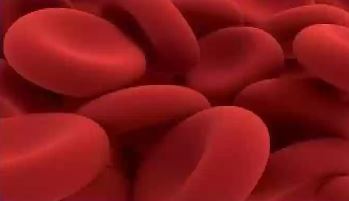A Literary Review on Pandu Roga
DOI:
https://doi.org/10.21760/jaims.9.7.18Keywords:
Pandu, Varnopalakshita Roga, Rasa-Vaha Srotas, Dhatu Shaithilyam, Dhatu Gauravam, Anaemia, nutritional deficiencyAbstract
In Ayurvedic classics, the description of Pandu is available in three forms i.e., Pandu as a disease, Pandu as a complication, and Pandu as a sign of certain diseases. Pandu Roga is one of the diseases mentioned in Ayurveda characterised by changes in the skin colour to white (Shweta), yellowish (Peeta), greenish (Harita) etc. which is one of the “Varnopalakshita Roga" i.e., a disease characterised by the change in the colour. Pandu is a disease of Rasa-Vaha Srotas and it is a Pitta Pradhan Vyadhi in which due to Pitta Pradhan Hetusevana, Pitta dominant Tri Dosha Prakopa occurs and causes Dhatu Shaithilyam and Dhatu Gauravam, further it leads Sneha, Bala, Varna, and Ojokshaya and due to this Rakta and Meda Dhatu decreases and Vaivarnata occurs. The clinical condition of Pandu in Ayurveda resembles the anaemia described in Modern Medical Science, due to the resemblance in the clinical signs and symptoms. Anaemia is a major global public health problem and the most prevalent nutritional deficiency disorder in the world and has serious consequences for national development. This article discusses anaemia (Pandu) from an Ayurvedic perspective.
Downloads
References
Brahmanand Tripathi. Varanasi: Chaukhambha Surbharati Prakashan; Hindi Commentator, Charaka Samhita.
Shastri Ambikadatta, susruta samhita, Ayurvedatatvasandipika Hindi commentary, Vol. II, Chap. 44/41, Chaukhambha Sanskrit sansthan, Varanasi reprint edition.
Shastri Ambikadatta; Bhaisajyaratnavali Vidyotni Hindi Commentary Chaukhamba Sanskrit Sansthan Varanasi Chapter,12 P-277.
Charak Samhita su. 19/4 of Vaidya Manorama Hindi Commentary special deliberation and appendices, etc. by Ravidatta Tripathi, published by Chaukhamba Sanskrit Prakashan, Varanasi; c2013. p. 285.
Sushrut Samhita uttar 44/6 by Vd.Yadavaji Trikamji Acharya, published by Chaukhamba Sanskrit Sansthan, Varanasi; c1994. p. 623.
Madhav Nidan Madhukosha commentary Chaukhambha Sanskrit Sansthan 31st edition; c2002.
Sastri S. Madhava Nidanam of Sri Madhavakara with the Madhukosa Sanskrit commentary by Srivijayarakshit and Srikanthadatta with the vidyotini Hindi commentary, Part I and II, Chaukhambha Prakashana, Varanasi; c2006. (Reprint).
Pandey Ajay Kumar, Textbook Of kaya chikitsa, Vol 2, Chapter 2, Chaukhmbha Publications, New Delhi, First Edition; c2019. p. 168.
Shastri Ambikadatta, Susruta Samhita, ayurveda tatvasandipika Hindi commentary, Vol. II, Chp. 44/15, Chaukhambha Sanskrit sansthan, Varanasi; reprinted edition; c2014. p. 365.
Ambika Datta Sastry, Sushrutha samhita, Uttara tantra, 7th Edition, Chaukambha Sanskrit Samsthan, Varanasi; c1990. p. 286.
Tripathi Pt. Harihara Prasad Harita Samhita Hari Hindi Vyakhyasahita, Varanasi, Chuakhambha Krishna Das Academy, 2nd Edition,2009, Tritiya Sthana, Chapter 21, Pg.358.
Byadgi S. Parameswarappa, Textbook Of Vikrti Vijnana & Roga Vijnana, Vol.2, Chapter 1/17, Chaukhmbha Publications.
Ashtanga Hridaya of Vaghbhatta, Sarvanga Sundari Comm. Arunadatta, Edited by Pt. Hari Sadasiva sastri paradakara, Chaukhambha Surbharati Prakashan Varanasi.















